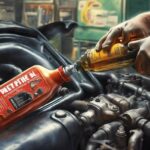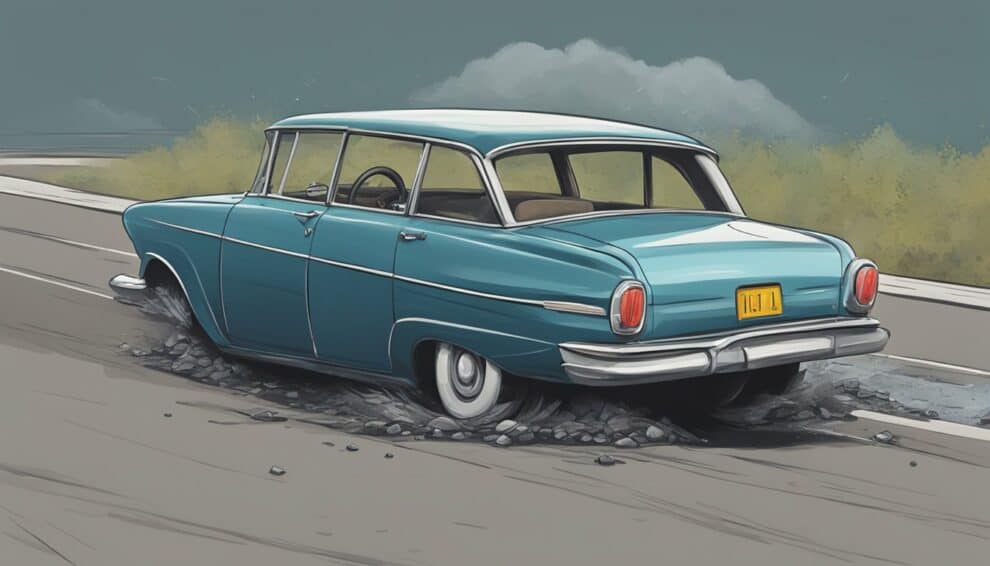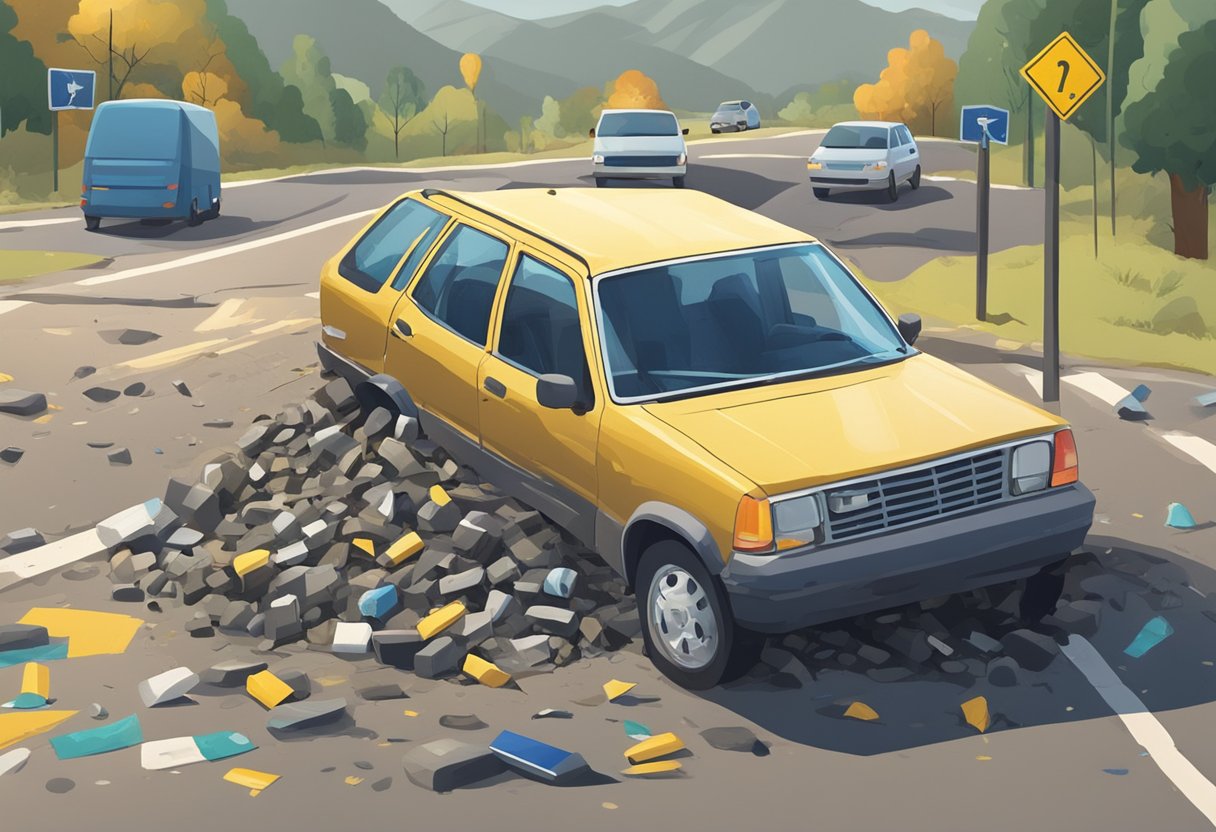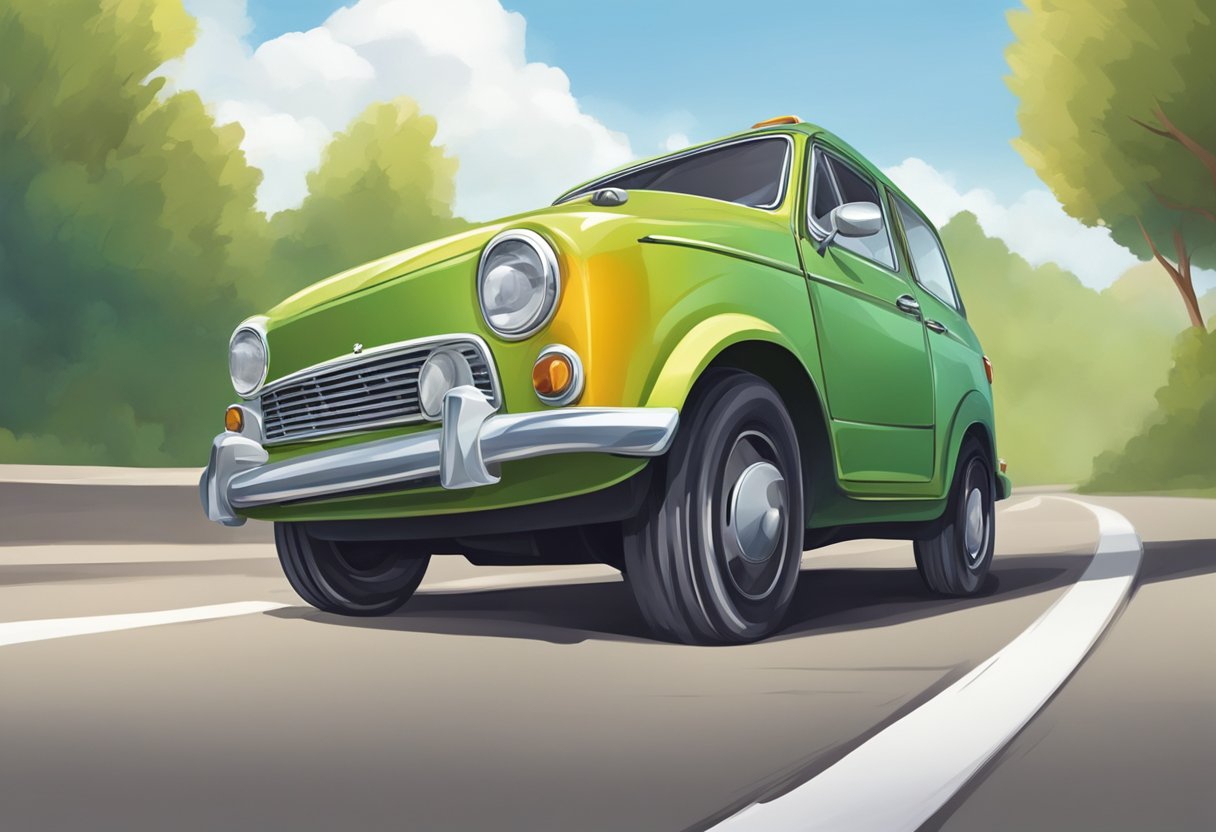Driving with a nail in your tire can be a nerve-wracking experience. You may be wondering if it’s safe to continue driving or if you should pull over immediately. The truth is, there is no one-size-fits-all answer to this question. It depends on a few factors, such as the size and location of the nail, the condition of your tire, and how far you need to drive.
If the nail is small and located in the tread of the tire, you may be able to continue driving for a short distance without any issues. However, if the nail is large or located in the sidewall of the tire, it’s best to pull over and have the tire inspected by a professional. Driving on a tire with a large nail can cause further damage to the tire and potentially lead to a blowout, which can be dangerous while driving.
In this article, we will explore the risks and potential consequences of driving with a nail in your tire. We will also provide guidance on what to do if you find yourself in this situation and how to prevent it from happening in the future. By the end of this article, you will have a better understanding of whether it’s safe to continue driving with a nail in your tire or if it’s a road to disaster.
Understanding Tire Damage
Tire damage is a common problem that every driver may face at some point. It can be caused by various factors, such as punctures, cuts, impacts, and wear. Understanding the types of tire damage and how to assess them can help you make an informed decision about whether it is safe to drive with a nail in your tire.
Types of Tire Damage
There are several types of tire damage that you should be aware of:
-
Punctures: These are small holes in the tire caused by sharp objects, such as nails, screws, or glass. Punctures can be repaired if they are less than 1/4 inch in diameter and located in the tread area.
-
Cuts: These are longer and deeper injuries to the tire caused by sharp objects or debris on the road. Cuts can be repaired if they are less than 1/2 inch in length and not located on the sidewall.
-
Impacts: These are damages to the tire caused by hitting a curb, pothole, or other obstacle on the road. Impacts can cause bulges, bubbles, or cracks in the tire, which may require immediate replacement.
-
Wear: This is the gradual loss of tread depth and rubber on the tire due to normal usage and aging. Wear can affect the traction, handling, and safety of the tire, especially in wet or snowy conditions.
Assessing Nail Damage
If you notice a nail in your tire, the first thing you should do is assess the extent of the damage. Here are some steps to follow:
-
Check the position of the nail: If the nail is located in the tread area and not too close to the sidewall, it may be possible to repair the tire. However, if the nail is in the sidewall or close to it, the tire may need to be replaced.
-
Check the size of the nail hole: If the nail hole is less than 1/4 inch in diameter, it may be possible to repair the tire. However, if the hole is larger or irregular in shape, the tire may not be repairable.
-
Check the condition of the tire: If the tire is already worn, damaged, or has other punctures or cuts, it may not be safe to repair or drive on. In this case, the tire should be replaced immediately.
In conclusion, understanding tire damage and how to assess it can help you make a safe and informed decision about driving with a nail in your tire. If you are unsure about the extent of the damage or the safety of the tire, it is always best to consult a professional tire technician or replace the tire.
Risks of Driving with a Nail in Your Tire
If you’ve ever found a nail in your tire, you may be wondering if it’s safe to drive on. While it’s tempting to ignore the issue and continue driving, doing so can pose serious risks to both you and your vehicle.
Immediate Dangers
Driving with a nail in your tire can lead to immediate dangers on the road. The nail can cause a puncture in the tire, which can result in a blowout. A blowout can cause you to lose control of your vehicle, leading to a serious accident. Additionally, driving on a flat tire can damage your wheel and lead to costly repairs.
Long-Term Consequences
Even if you manage to avoid a blowout, driving with a nail in your tire can still have long-term consequences. The nail can cause a slow leak, which can lead to decreased tire pressure. Low tire pressure can cause your tire to wear unevenly, reducing its lifespan and increasing the risk of a blowout. Additionally, driving on a tire with low pressure can reduce your vehicle’s fuel efficiency and make it more difficult to handle on the road.
In conclusion, driving with a nail in your tire is not safe and can lead to serious risks and consequences. It’s best to address the issue as soon as possible by either repairing or replacing the tire.
Safe Driving Practices
When to Drive Short Distances
Driving with a nail in your tire can be dangerous, but there are times when you may need to drive short distances to get to a safe location to change the tire. If you find yourself in this situation, there are a few things you can do to reduce the risk of a blowout.
First, avoid driving at high speeds. The faster you go, the more stress you put on the tire, and the more likely it is to fail. Stick to side streets and avoid highways if possible.
Second, avoid sharp turns and sudden stops. These actions can cause the nail to shift and puncture the tire more deeply, increasing the risk of a blowout. Drive smoothly and steadily, and brake gently.
Finally, keep an eye on the tire pressure. If the tire is losing air rapidly, it may not be safe to drive at all. Use a tire pressure gauge to check the pressure frequently, and stop to add air if necessary.
Preventive Measures
The best way to avoid driving with a nail in your tire is to take preventive measures. Here are some tips to help you reduce the risk of getting a nail in your tire in the first place:
- Avoid driving on roads that are under construction or have a lot of debris on them.
- Keep your tires properly inflated. Underinflated tires are more likely to be punctured by a nail or other sharp object.
- Inspect your tires regularly for signs of wear and tear. If you notice any bulges, cracks, or other damage, have the tire replaced immediately.
- Consider investing in run-flat tires or a tire repair kit. These can help you get to a safe location if you do get a nail in your tire.
By following these safe driving practices and taking preventive measures, you can reduce the risk of a blowout and stay safe on the road.
Could Overcharging a Car Battery Cause a Nail in the Tire to Be More Dangerous?
Overcharging a car battery can lead to increased pressure in the tires, making a nail’s puncture more dangerous. Signs of car battery overcharging include a strong sulfur smell, a bloated battery case, or flickering headlights. Regular maintenance can prevent these issues and keep your vehicle safe on the road.
Professional Repair and Maintenance
If you have a nail in your tire, it is best to get it repaired by a professional. While you may be tempted to fix it yourself, a professional repair ensures that the tire is safe to drive on and reduces the risk of a blowout.
DIY vs. Professional Repair
While DIY tire repair kits are available, they are not recommended for long-term use. These kits typically use a plug to fill the hole, which may not be sufficient for larger punctures or damage to the tire sidewall. A professional repair involves removing the tire from the wheel, inspecting it for damage, and patching the puncture from the inside. This is a more thorough repair that ensures the tire is safe to drive on.
Maintenance Tips After Repair
After getting your tire professionally repaired, it is important to follow some maintenance tips to ensure your safety on the road. Here are some tips to keep in mind:
- Check the tire pressure regularly to ensure it is at the recommended level.
- Avoid driving on rough terrain or over potholes to prevent further damage to the tire.
- Avoid overloading the vehicle, as this can put extra stress on the tire.
- Get your tires rotated regularly to ensure even wear and extend their lifespan.
By following these maintenance tips, you can ensure that your tire remains safe and reliable after a professional repair.
Legal and Insurance Considerations
If you are driving with a nail in your tire, it is important to consider the legal and insurance implications. In most cases, driving with a nail in your tire is not illegal, but it can be dangerous and could lead to a collision.
If you are involved in an accident and it is determined that the nail in your tire contributed to the accident, your insurance company may not cover the damages. This is because driving with a known hazard, such as a nail in your tire, can be considered negligence on your part.
It is important to note that some insurance policies may cover damages caused by driving with a nail in your tire, but it is best to check with your insurance provider to see what your policy covers.
Additionally, if you are driving with a nail in your tire and it causes damage to someone else’s vehicle or property, you could be held liable for the damages. This is why it is important to have your tire repaired or replaced as soon as possible to avoid any potential legal or insurance issues.
In summary, while it may not be illegal to drive with a nail in your tire, it can be dangerous and could lead to legal and insurance issues. It is best to have the tire repaired or replaced as soon as possible to avoid any potential problems.
As an Amazon Associate we earn from qualifying purchases.













